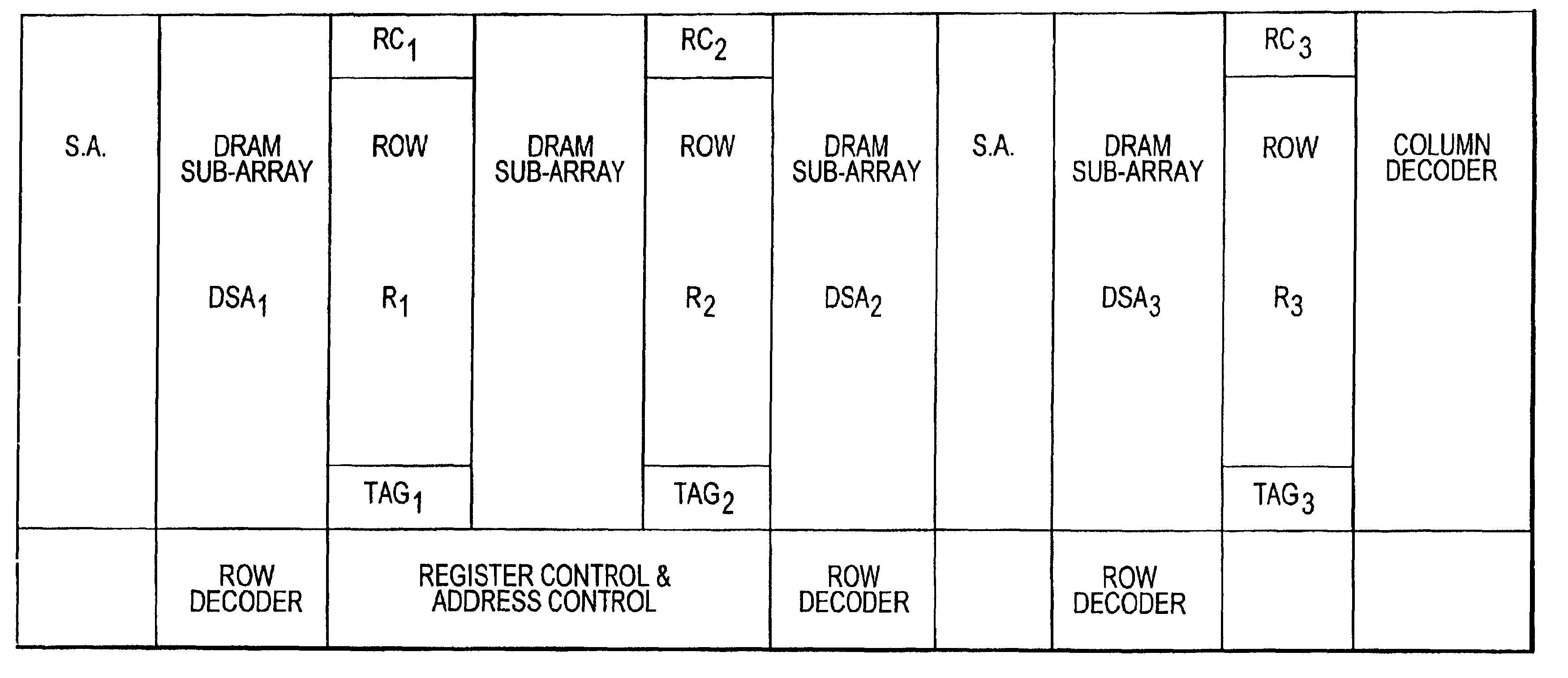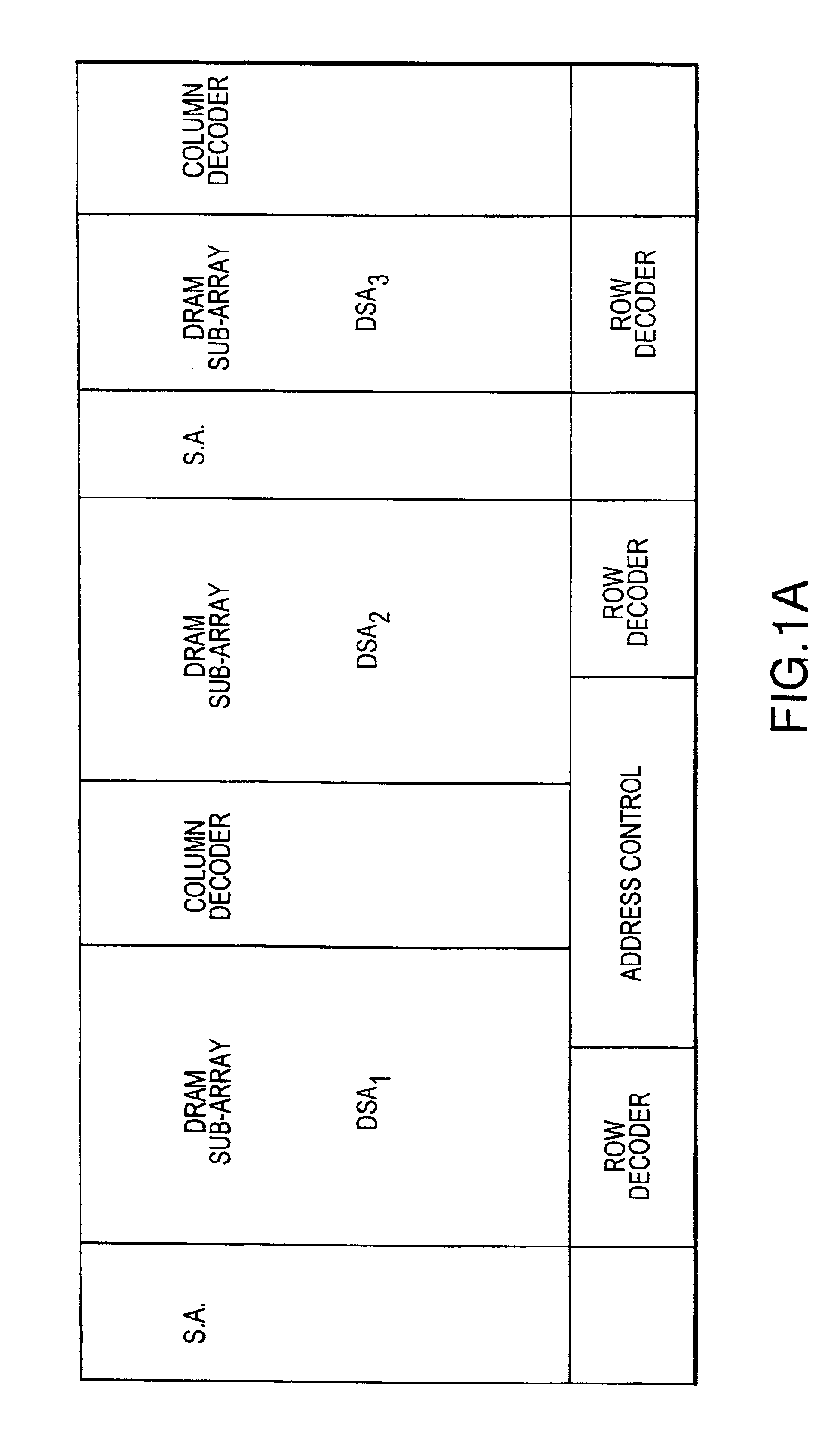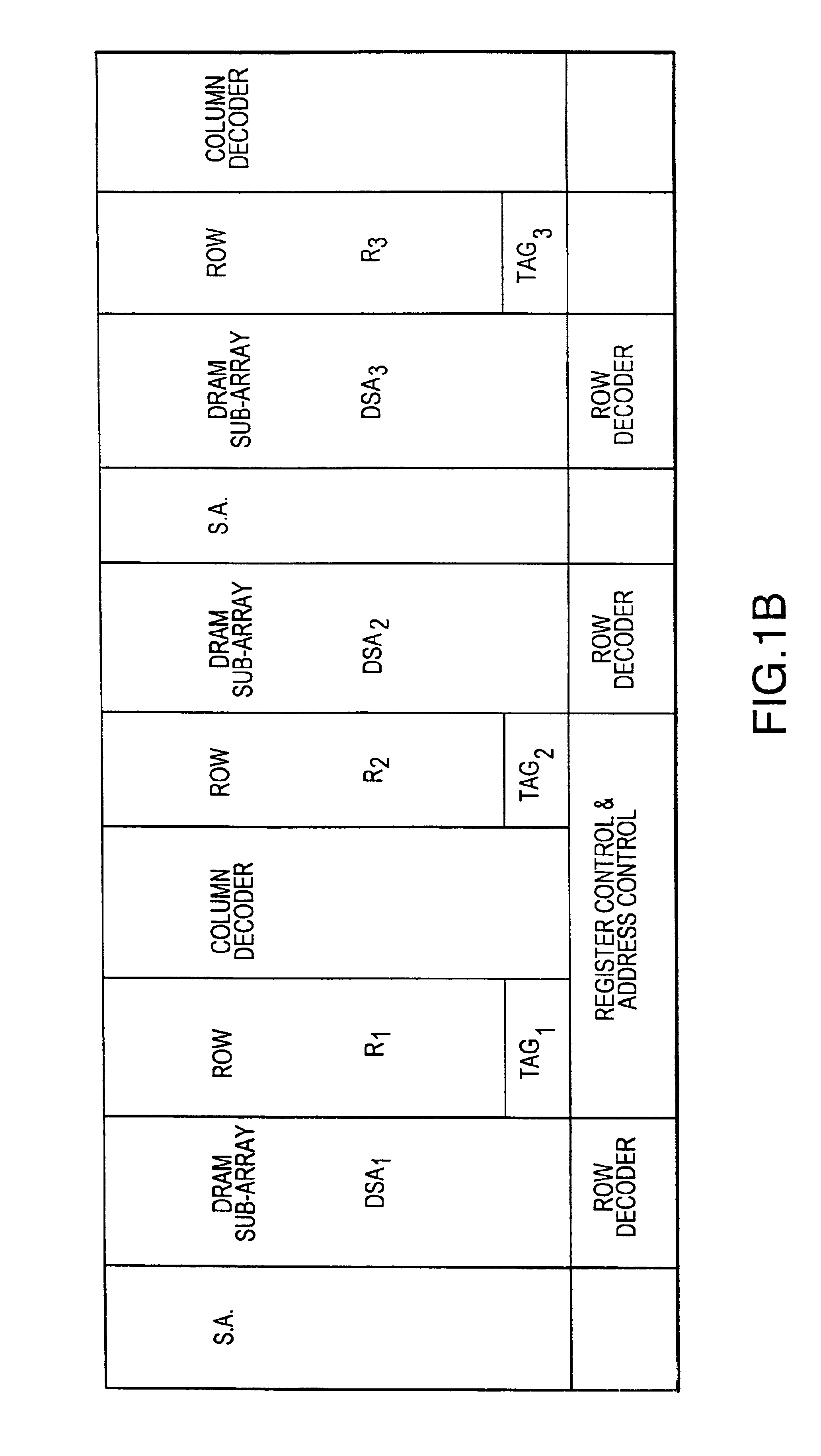Method for hiding a refresh in a pseudo-static memory
a pseudo-static memory and refresh technology, applied in memory adressing/allocation/relocation, digital storage, instruments, etc., can solve the disadvantages of disadvantageous data loss, disadvantageous array cycle time of drams, and complicated design of external memory controllers
- Summary
- Abstract
- Description
- Claims
- Application Information
AI Technical Summary
Benefits of technology
Problems solved by technology
Method used
Image
Examples
first embodiment
[0018]Referring now to the drawings, in which like reference numerals designate identical or corresponding parts throughout the several views, FIG. 1A is an illustration of a pseudo-static memory architecture according to a first aspect of the present invention. Generally, the present invention includes control circuitry for performing a refresh operation in at least a first DRAM sub-array when a second DRAM sub-array is being accessed (for reading or writing).
[0019]Turning now to FIG. 1B, in the second aspect, like the memory architecture shown in FIG. 7 of the '317 patent, a pseudo-static memory device includes both plural DRAM sub-arrays and at least one row (e.g., an SRAM row) coupled to the plural DRAM sub-arrays. The at least one row can act as an intermediate storage area for at least one of the plural DRAM sub-arrays when reading from or writing to that sub-array while contemporaneously refreshing a different DRAM sub-array.
[0020]For example, as illustrated in FIG. 2, a read...
second embodiment
[0022]The approach illustrated in FIG. 2, however, may adversely waste power by running refreshes excessively often. Consequently, in the present invention shown in FIG. 3, the pseudo-static memory device determines whether or not an appropriate amount of time has elapsed since the last refresh cycle. A refresh cycle is run behind the given access cycle only if the time has expired. As shown in FIG. 3, consecutive read misses occur for rows 1-4 of DSA1, thereby updating R1 and LRR1 after each miss. Unlike the timing diagram of FIG. 2, on the first read miss, a refresh cycle of at least one other sub-array does not occur since the timer has not yet decremented to zero. Instead, each clock cycle (either internal or external) the timer is decremented, thus RC(global) remains constant until the timer hits zero. In one implementation, the rollover of the counter sets a “refresh pending” flag, and the timer is allowed to decrement again immediately. In an alternate implementation, the tim...
fourth embodiment
[0025]It should be noted that the ability to hide a refresh cycle behind an access is contingent upon the ability to have the refresh cycle occur for an address in a different DRAM sub-array than the sub-array where the access is occurring. However, if a series of accesses are directed to a first DRAM sub-array, then the other sub-arrays are being refreshed properly, but the first sub-array is not. Accordingly, as shown in FIG. 5, the present invention includes separate refresh counters for each sub-array. This prevents a row in the first sub-array from being “skipped” when the corresponding row is refreshed in the other sub-arrays. As shown in FIG. 6, when a read miss occurs in DSA1, refreshes in DSA2 and DSA3 are performed and their corresponding refresh counters (i.e., RC2 and RC3) are updated. However, the value stored in RC1 is left unchanged, so that no rows in DSA1 are skipped for refresh.
PUM
 Login to View More
Login to View More Abstract
Description
Claims
Application Information
 Login to View More
Login to View More - R&D
- Intellectual Property
- Life Sciences
- Materials
- Tech Scout
- Unparalleled Data Quality
- Higher Quality Content
- 60% Fewer Hallucinations
Browse by: Latest US Patents, China's latest patents, Technical Efficacy Thesaurus, Application Domain, Technology Topic, Popular Technical Reports.
© 2025 PatSnap. All rights reserved.Legal|Privacy policy|Modern Slavery Act Transparency Statement|Sitemap|About US| Contact US: help@patsnap.com



